With the development of IoT for home and industrial use, the number of products with battery-powered sensors/detectors is increasing.
Since it is battery-powered, it is necessary to reduce power consumption, but the accuracy must be as good as before.
Texas Instruments (hereafter, TI) released the LPV821, the industry's first zero-drift nanopower operational amplifier, to meet the requirements for low power consumption and high precision.
We will explain what kind of technology the zero-drift nanopower operational amplifier is and its features.
Features of Zero-Drift Nanopower Operational Amplifiers
Feature 1: Ultra-low current consumption of 650nA
TI refers to op amps with nA-order quiescent current as nanopower op amps.
The LPV821 is one of the nano power amplifier products.
Op amp current consumption is a trade-off between bandwidth, slew rate, and noise. In order to achieve low current consumption, it is designed to measure signals close to DC, reducing current consumption.
The reduced current consumption not only improves the usable life of battery-powered equipment, but also reduces the size, cost and weight of the equipment.
Feature 2: High DC accuracy
High DC accuracy with offset voltage of ±20uV and offset voltage drift of 0.08uV/°C provides good accuracy with respect to power. Small offset voltage and offset voltage drift are also useful for power reduction.
For example, when using an op amp for current sensing.
Generally, current is passed through the shunt resistor and the voltage of the shunt resistor is measured as shown in the figure below.

If the offset voltage is large, the ratio of the offset to the signal will be large unless the voltage generated by the shunt resistance and the current is large, resulting in poor accuracy. A small offset voltage means that it is easier to obtain accuracy even with low resistance values.
The use of low resistance values reduces power loss due to current and resistance, contributing to reduced power consumption.
Feature 3: No 1/f noise
As mentioned in Feature 1, current consumption, the LPV821 is an operational amplifier for signals close to DC. However, op amps usually have noise present at low frequencies called 1/f noise (also called pink noise or flicker noise).
When measuring low-frequency signals close to DC, the presence of 1/f noise affects measurement accuracy. However, an amplifier called a zero-drift amplifier, which minimizes offset voltage and drift, does not generate 1/f noise in principle. This is a great advantage when measuring signals near DC.
Why Zero-Drift Amplifiers Don't Generate 1/f Noise
Zero-drift amplifiers reduce offset voltage and offset voltage drift through self-correction technology. Low offset voltage and low offset voltage drift by this self-correction technology are achieved by switching the input/output path of the operational amplifier as shown below.
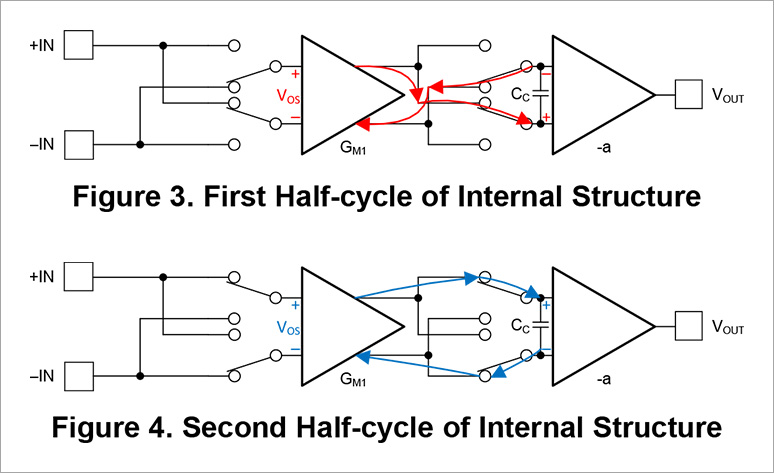
This internal switching eliminates the 1/f noise present at low frequencies. Also, the noise characteristics comparing the zero-drift amplifier and the normal amplifier are shown below. It can be seen that the low-frequency noise is small in the zero-drift amplifier.
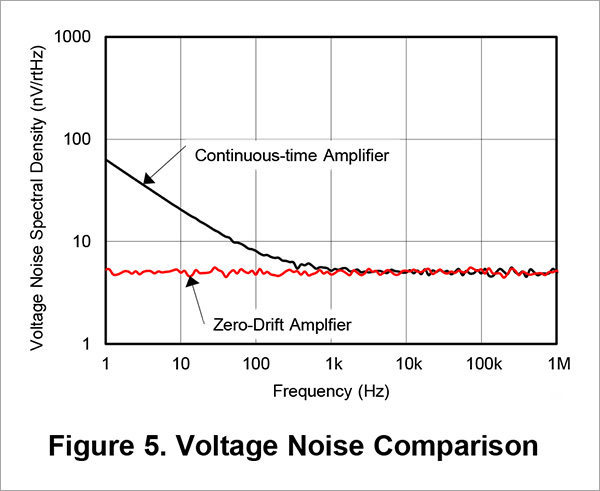
Precautions when using
So far, we have introduced the advantages of using a zero-drift nanopower operational amplifier. The reason for this is that since switching is performed internally, some noise due to the switching frequency appears as shown in the figure below.
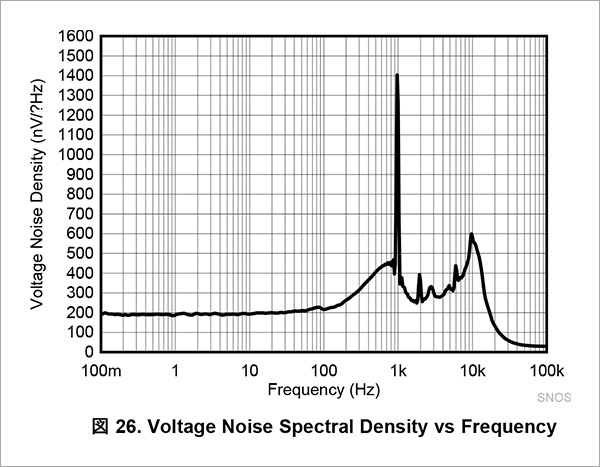
A workaround is to add a filter to remove the switching frequency of the zero-drift amplifier. Also, the frequency of the signal input to the amplifier must be a frequency that is not affected by the filter bandwidth.
Application examples using zero-drift nanopower operational amplifiers
Examples include gas detectors, field transmitters and battery packs, as well as various other applications where system requirements for high accuracy and low power consumption are critical. We will also introduce two reference designs provided free of charge by TI.
Application example
- gas detector
- Ductless air conditioning indoor system
- light sensor
- refrigerator and freezer
- Chemistry/blood gas analyzer
- Patient monitoring (wired)
- Infusion pump
- Wireless environment sensor
- smoke and heat detector
- Air quality and gas detection
- dialysis machine
- electronic thermometer
- electric toothbrush
Reference Design 1: Low Power Carbon Monoxide Detector Enabling 10-Year Coin Cell Battery Life
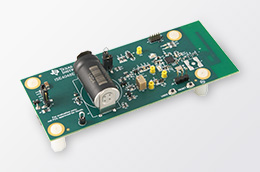
This design uses a nanopower operational amplifier, comparator, system timer, temperature sensor, and SimpleLink™ ultra-low power 2.4GHz wireless microcontroller (MCU) platform as a reference for an ultra-low-power carbon monoxide detector. Design.
Delivering ultra-long battery life, this technology offers over 10 years of life from a single standard CR2032 Lithium-Ion coin cell battery and has also been adopted in applications such as gas detection and atmospheric circulation monitoring. increase.
http://www.tij.co.jp/tool/jp/TIDA-00756
Reference Design 2: Low Power Chemical Gas Sensor Amplifier
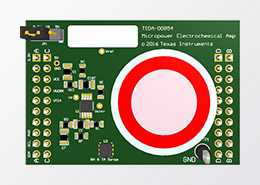
This reference design consists of a low power "potentiostat" type electrochemical sensor circuit for battery powered portable, long life portable or fixed remote location devices. The use of nanopower amplifiers and reference circuits allows the circuit to function continuously independently of the supervisory processor, preserving sensor bias and reducing start-up time.
http://www.tij.co.jp/tool/jp/TIDA-00854
Zero-drift nanopower operational amplifier developed for applications requiring low current consumption and high precision detection
This time, we introduced the features of nanopower zero-drift amplifiers. Using such devices helps develop small, lightweight, and low-cost systems that have long system lifetimes with low-capacity batteries.
In particular, if you are looking for an op amp like the one below, we recommend TI's LPV821, a nanopower zero-drift amplifier.
The LPV821 is recommended for those looking for such an operational amplifier
- Low current consumption + precision operational amplifier
- Sensor output operational amplifier that can be used for IoT
- Op amps for battery-powered sensor nodes
If you would like more information about the LPV821, please contact us.
Click here for recommended articles/materials
Why does DDR memory need a dedicated power supply?
WEBENCH® is overwhelmingly easy to use! Engineers talk about 5 attractions
When is the simulation function of WEBENCH® Power Designer useful?
Get started with WEBENCH®! Basics ~What kind of customization to try first~
Click here for product price information and availability
Click here for manufacturer site/other related links
LPV821 650nA Precision Nanopower Zero-Drift Amplifier Datasheet
Benefits of Nanopower, Zero-Drift Amplifiers for Battery Voltage and Current Monitoring in Portable Applications
Zero-Drift Amplifiers: Features and Benefits

